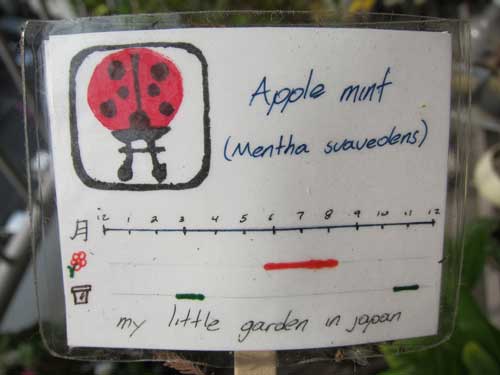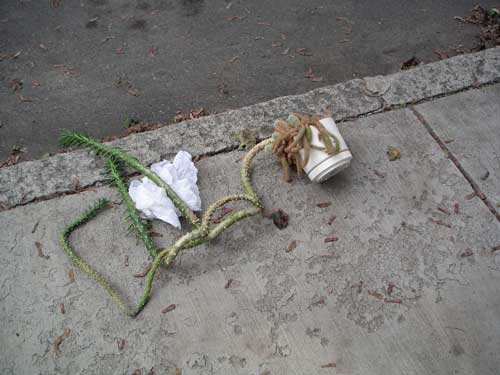
By Tokyo’s standards, this residential yard is large. I love simplicity of the garden, viewed from the street: a long hedge, a bamboo fence, an orange tree in the background, and another heavily pruned tree that is dormant in the winter (maybe a cherry tree).
The star of the public face of the garden is the elaborate pine tree pruned into four rings.
I wonder if every few years, the gardener adds an additional ring. The design is at once simple and the result of regular care over years of growth. Like the finest traditional Japanese garden, this single tree combines nature and artifice, and conveys a relationship between people and other life forms. I like the generosity of the owner who shares this tree equally with passers-by and the residence’s inhabitants and guests.
The tree is, I think, called ゴヨウマツ or Japanese white pine in English (Pinus parviflora), a common bonsai and garden tree.













